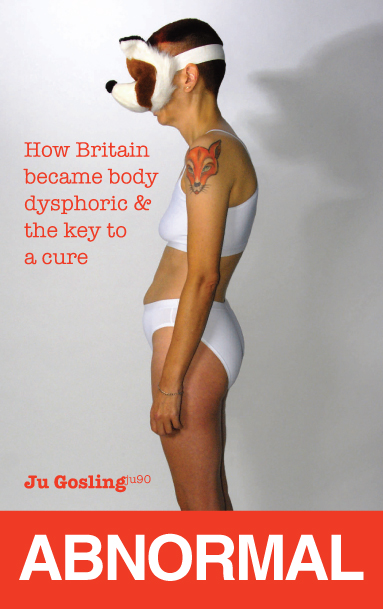The
Brace/Borg
While
I'm proud to be disabled, being in this kind of
pain is not a lot of fun, so in November 1996 I obtained a referral to
the aptly named Henry V. Crock, Consultant Spinal Surgeon at the Cromwell
Hospital's Spinal Disorders Unit. He suggested that, since mobilising my
spine through exercise only tended to aggravate the pain, immobilising
it might allow the inflammation to calm down and perhaps even to heal permanently.
He therefore referred me to Kelvin Smith, an orthotist based at the Royal
National Orthopaedic Hospital, who made a plaster cast of my body in order
to mould me a custom-made spinal brace. As well as immobilising my spine,
the brace would encourage me to stand naturally, if crookedly; twenty years
of trying to force my body into having a "normal" silhouette - after being
accused repeatedly by doctors of having "bad" posture - had not helped
my pain.
The
brace, which was made of plastic, covered the full length of my spine and
was fastened tightly with a number of nylon straps. While I was delighted
at the prospect of being in less pain, trying the brace on for the first
time was a frightening experience. The feeling of being confined made me
panic and hyperventilate, and the brace's appearance filled me with horror.
Its white nylon straps were made of the same material as the fastenings
on my racing dinghy. Its surgical pink surface took no account of ethnic
difference: if you were "white", you were pink. Its shape exaggerated my
waist and hips, while my breasts were the only part of my torso left exposed,
creating a feminised, almost Edwardian silhouette. And the hospital had
taken great care to ascertain my marital status, labelling it by my "lack"
of a husband as belonging to "Miss" Gosling (a title which I never used)
in a manner which suggested (rightly, but for the wrong reasons) that it
would always be that way.
At
this point I was only barely aware of the artist Frida
Kahlo and had never seen her famous self-portrait in her brace, so
I was unable to draw the inspiration from her which, thanks to the History
of Modern Art and Design research students at Falmouth - who made the connection
as soon as they met me - I later gained. Added to the fact that almost
none of my clothes would fit either under or over the brace, I felt my
identity dissolve; the brace had claimed me, borg-like, to wear it. I fitted
into the brace, but the brace did not fit me. My androgynous image had
vanished; instead the brace/borg exaggerated my femininity and impairment
whilst conflating the two.
This
increased my sense of confinement, a negative image of disability which
I had always fought against. Like a wheelchair, the brace was meant to
liberate me, by allowing me to do more than I could otherwise; like a wheelchair
(despite most people's misconceptions), I could leave it when I wanted.
But now my personality was trapped within the borg/brace. The only answer
was to reassert my ownership, to assimilate the brace within myself rather
than continuing to be assimilated by it.
Next:
From Borg to Cyborg
Return to My Not-So-Secret Life as a Cyborg
Return
to Ju Gosling's Home Page
